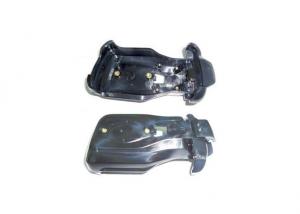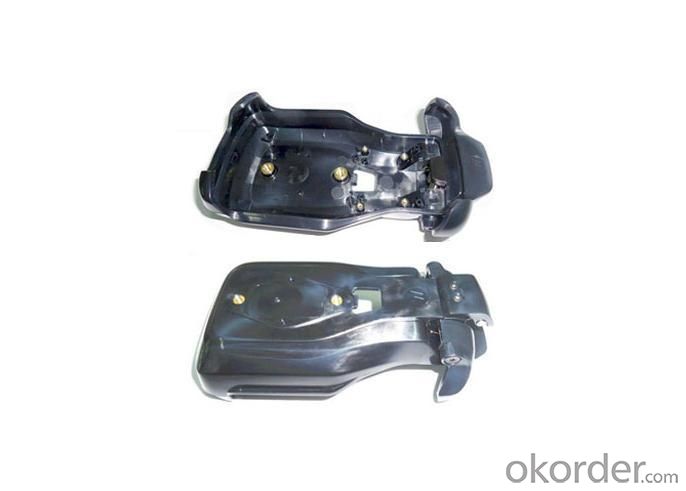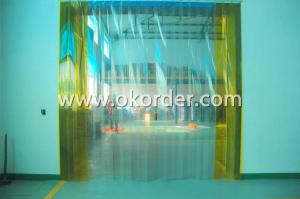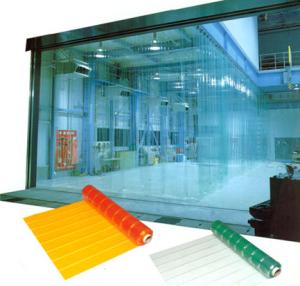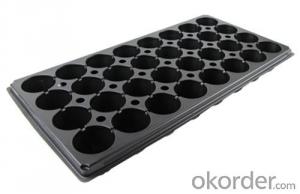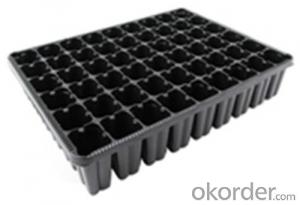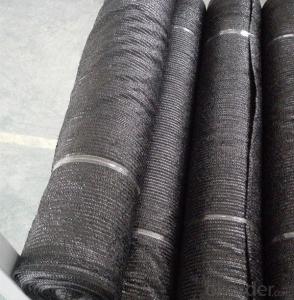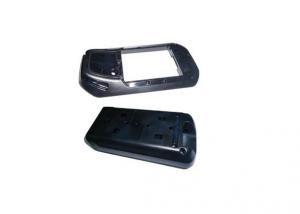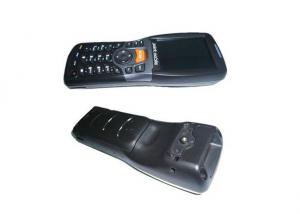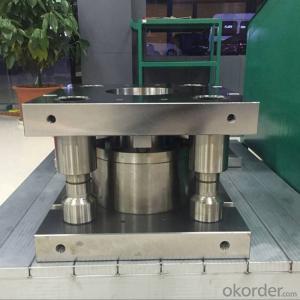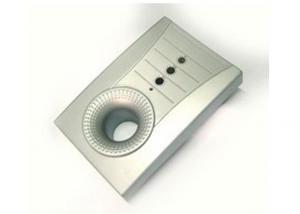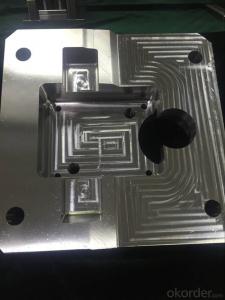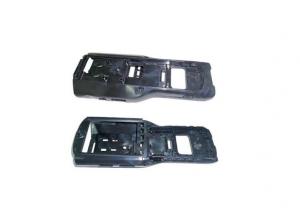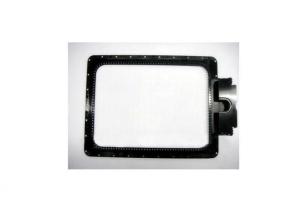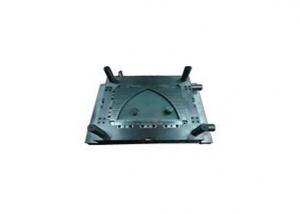Plastic Injection Molding Parts for PDA Car Charger Base
- Loading Port:
- China Main Port
- Payment Terms:
- TT or LC
- Min Order Qty:
- 1 Set set
- Supply Capability:
- 100 Pieces per Month set/month
OKorder Service Pledge
OKorder Financial Service
You Might Also Like
Detailed Product Description
1.Standard HASCO
2.Finish: Texture MT11015
3.Material : PC
4.Mould Life: 300,000 shots
5.Size:180*70*30
PDA car charger base precision plastic injection molding parts
Certificate: ISO 9001:2008
20 years experience
Name |
Plastic injection Mould products |
Plastic material |
ABS,PC,ABS+PC,PA66,HIPS,PE,PP,etc |
Cavity & Core |
NAK80,S136 HRC48~52° |
Mould base |
LKM , HASCO |
Nos of Cavity |
As customer rquest |
Mould Standard |
DME, HASCO |
Mould Runner |
Hot Runner,Cold Runner … |
Surface finish |
Texture, High glossy ,Painting,Chrome Plating |
Delivery time |
20-35 Days |
Mould Packing |
Wooden Box or as your requirement |
Our Advantages:
-- Competitive price.
-- Professional, excellent, but simple design.
-- High quality, reliability and long mould life.
-- Professional customised R&D program.
-- Diverse and mature craft.
-- Continuous service and supply.
-- Strict quality management.
-- High-quaity and integrated equipments:
-- High-speed processing center.
--Sodick wire cutting.
--Sodick cnc sinker EDM, EROWA Tooling System.
--40 sets plastic machinery with 80-1600MT.
--All our operations satify the standard of ISO9001:2008 certification.
--Exported products comply to requirements of Rohs certificate.
- Q: Can electronic plastic be used in electronic connectors?
- Yes, electronic plastic can be used in electronic connectors. Electronic plastic, also known as engineering plastic, is commonly used in the manufacturing of connectors due to its excellent insulating properties, durability, and resistance to heat and chemicals. It allows for reliable and efficient transmission of electrical signals in various electronic devices and systems.
- Q: What are the considerations for electronic plastic in terms of chemical resistance?
- When considering chemical resistance of electronic plastic, several factors need to be taken into account. First and foremost, the type of chemicals that the plastic will come into contact with should be identified. Understanding the specific chemical composition and properties of these substances is crucial in selecting a plastic material that can resist their effects. Additionally, the duration and frequency of exposure to these chemicals should be considered. Some plastics may have good resistance to certain chemicals in short exposure periods but may deteriorate over time with prolonged contact. Therefore, evaluating the expected duration and frequency of chemical exposure is essential. Another important consideration is the temperature at which the plastic will be exposed to chemicals. Elevated temperatures can accelerate the chemical degradation process, causing the plastic to lose its resistance. Therefore, it is crucial to choose a plastic material that can withstand the anticipated temperature range. Furthermore, the mechanical stress that the plastic will be subjected to should be assessed. Chemicals can sometimes weaken the structural integrity of the plastic, making it more susceptible to mechanical failure. Understanding the expected mechanical stresses and selecting a plastic that can withstand them is crucial in ensuring long-term chemical resistance. Lastly, it is important to consider the potential interactions between different chemicals. Some chemicals may react with each other, leading to compound formation or increased aggressiveness. Evaluating the compatibility of different chemicals and their potential interactions with the plastic material is vital to ensure effective chemical resistance. Overall, considering the specific chemicals, duration and frequency of exposure, temperature, mechanical stress, and potential chemical interactions are crucial factors when evaluating the chemical resistance of electronic plastic.
- Q: Can electronic plastic be used in electronic relays?
- Yes, electronic plastic can be used in electronic relays. Electronic plastic materials, such as polycarbonate or polyimide, can provide insulation and protection for the components within the relay, ensuring proper functioning and preventing electrical shorts or breakdowns. Additionally, electronic plastic can be molded into complex shapes, allowing for customized designs and compact relay sizes.
- Q: How does electronic plastic impact the manufacturing process of electronic devices?
- Electronic plastic, also known as plastic electronics or organic electronics, has a significant impact on the manufacturing process of electronic devices. Unlike traditional electronics that rely on rigid materials, electronic plastic allows for the fabrication of flexible and lightweight components. This flexibility enables the production of curved or bendable electronic devices, which was previously not possible. Moreover, electronic plastic can be printed using large-scale manufacturing techniques such as roll-to-roll printing, reducing production costs and increasing the efficiency of the manufacturing process. Additionally, electronic plastic's properties, such as its ability to conduct electricity and its compatibility with various substrates, make it suitable for creating thin and flexible displays, sensors, and other electronic components. Overall, electronic plastic revolutionizes the manufacturing process by enabling the creation of innovative, flexible, and cost-effective electronic devices.
- Q: What are the potential health risks associated with electronic plastic?
- The potential health risks associated with electronic plastic include exposure to toxic chemicals such as phthalates, brominated flame retardants, and bisphenol A (BPA). These chemicals can leach out from the plastic and be ingested or inhaled, potentially causing hormonal imbalances, reproductive issues, developmental problems, and even certain cancers. Additionally, the improper disposal of electronic plastic can contribute to environmental pollution and further health concerns.
- Q: How does electronic plastic contribute to the reduction of waste generation in electronic device manufacturing?
- Electronic plastic, also known as electronic waste or e-waste, plays a significant role in reducing waste generation in electronic device manufacturing. This is because electronic plastic can be recycled and reused, preventing it from ending up in landfills or being incinerated, which helps minimize the environmental impact. By implementing proper recycling methods, electronic plastic can be broken down and used as raw materials for new electronic devices, reducing the need for virgin materials and conserving natural resources. Additionally, recycling electronic plastic promotes a circular economy, where materials are continuously reused, reducing the overall waste generated in the manufacturing process.
- Q: What are the risks of using electronic plastic in electronic devices?
- The risks of using electronic plastic in electronic devices include potential toxicity and environmental harm. Electronic plastics often contain hazardous substances such as brominated flame retardants and phthalates, which can leach out and pose health risks to humans and ecosystems. Additionally, the disposal and recycling of electronic devices made with these plastics can lead to environmental pollution if not managed properly.
- Q: Can electronic plastic be used in electronic touchscreens?
- Yes, electronic plastic can be used in electronic touchscreens. Electronic plastic, also known as conductive plastic, possesses the necessary properties to conduct electricity and can be used as a transparent conductive material in touchscreens. It offers benefits such as flexibility, durability, and cost-effectiveness, making it a suitable option for touch-sensitive displays.
- Q: Can electronic plastic be used for water-resistant devices?
- Yes, electronic plastic can be used for water-resistant devices. Electronic plastic, also known as polymers, can be engineered to have hydrophobic properties that repel water. This makes it suitable for creating water-resistant enclosures and seals for electronic devices, protecting them from water damage.
- Q: How is electronic plastic used in lighting?
- Electronic plastic is used in lighting as a crucial component of LED (light-emitting diode) technology. It is used to create the casing or encapsulation for the LED, protecting the delicate electronic components from external elements and providing structural support. Additionally, electronic plastic is also used in the manufacturing of light diffusers and lenses, which help to distribute and control the direction of light emitted by the LED.
1. Manufacturer Overview
| Location | Guangdong, China (Mainland) |
| Year Established | 2010 |
| Annual Output Value | |
| Main Markets | North America South America Eastern Europe Southeast Asia Africa Eastern Asia Western Europe Central America Northern Europe Southern Europe South Asia |
| Company Certifications |
2. Manufacturer Certificates
| a) Certification Name | |
| Range | |
| Reference | |
| Validity Period |
3. Manufacturer Capability
| a) Trade Capacity | |
| Nearest Port | Osaka Japan,Ravenna Italy,Montreal American |
| Export Percentage | 61% - 70% |
| No.of Employees in Trade Department | 6-10 People |
| Language Spoken: | English, Chinese |
| b) Factory Information | |
| Factory Size: | 5,000-10,000 square meters |
| No. of Production Lines | Above 10 |
| Contract Manufacturing | OEM Service Offered |
| Product Price Range | |
Send your message to us
Plastic Injection Molding Parts for PDA Car Charger Base
- Loading Port:
- China Main Port
- Payment Terms:
- TT or LC
- Min Order Qty:
- 1 Set set
- Supply Capability:
- 100 Pieces per Month set/month
OKorder Service Pledge
OKorder Financial Service
Similar products
Hot products
Hot Searches
Related keywords
